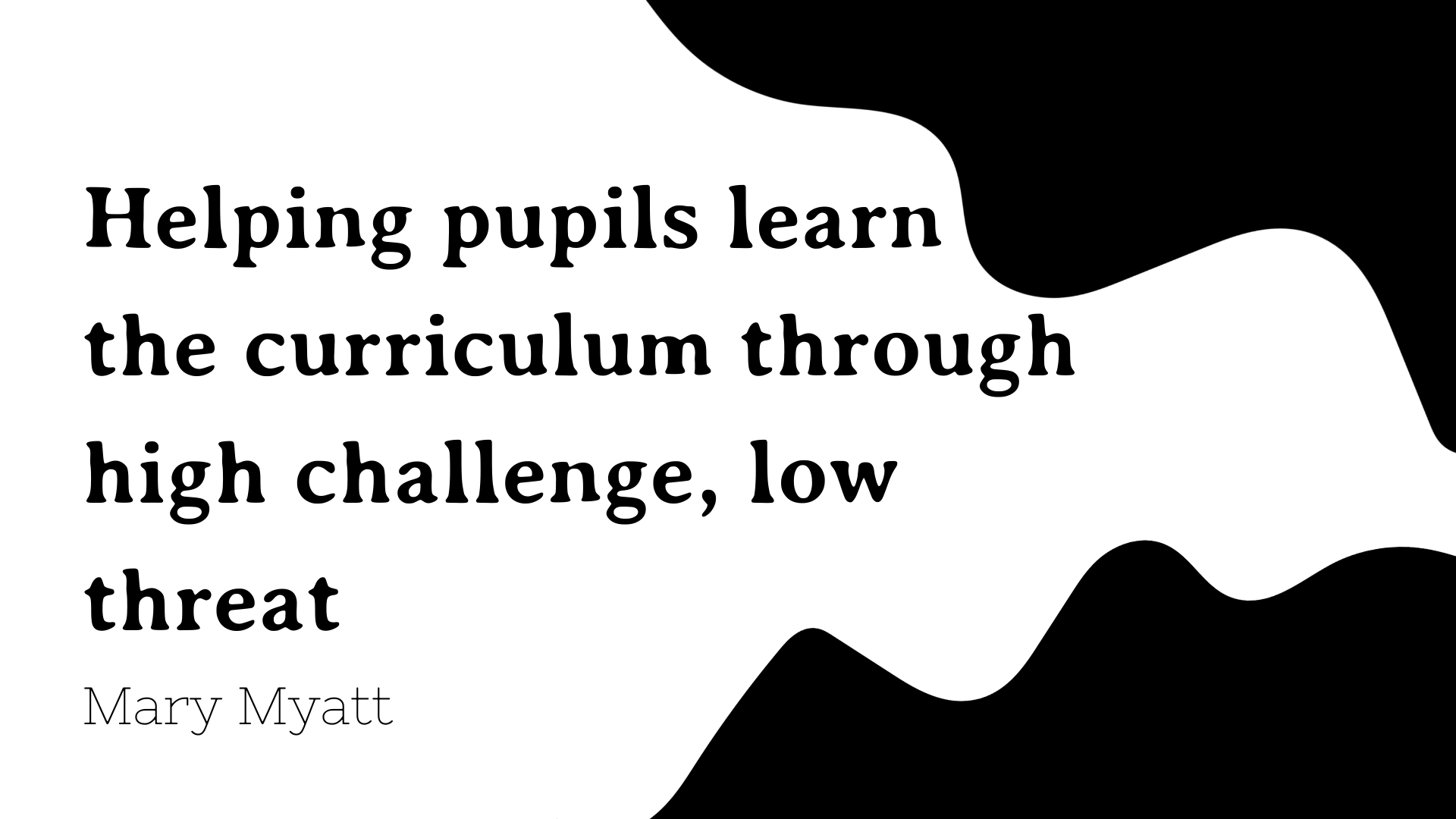Thinking about curriculum implementation
The implementation of the curriculum is the nuts and bolts of the quality of education. It is here that pupils encounter and grapple with the material. It is possible to have a website full of fine words and statements that the curriculum is ambitious, however, it is the quality of what happens in classrooms that indicates whether the intent has been translated into practice. The handbook says that inspectors will ‘consider the way that the curriculum developed or adopted by the school is taught and assessed in order to support pupils to build their knowledge and to apply that knowledge as skills (we call this ‘implementation’).’[1] The three strands of the quality of education judgment are not graded separately, but are considered together.
There are implications for staff development which follow from the implementation judgement. For example, ‘teachers have good knowledge of the subject(s) and courses they teach. Leaders provide effective support for those teaching outside their main areas of expertise.’ In order for teachers to have good subject knowledge, they need to be given the time and the resources to do this properly, it cannot be a bolt-on. Subject knowledge development is probably the greatest professional development need. The reason is that most primary colleagues teaching subjects beyond English and maths will need time to develop this aspect of their teaching. And this is the same for many secondary colleagues as well, due to the fact many are teaching subjects which were not their first discipline in university. And even for those who are teaching the same subject as their degree, they still have to get to grips with texts which were not studied at university. So, the professional development need for subject knowledge development is sector wide.
The handbook goes on to say that ‘teachers present subject matter clearly, promoting appropriate discussion about the subject matter being taught. They check pupils’ understanding systematically, identify misconceptions accurately and provide clear, direct feedback. In so doing, they respond and adapt their teaching as necessary without unnecessarily elaborate or individualised approaches.’ At the heart of this is responsive teaching, purposeful questioning to expose what pupils have understood and to address misconceptions.
The handbook also says ‘over the course of study, teaching is designed to help pupils to remember long term the content they have been taught and to integrate new knowledge into larger ideas’. In order to get this aspect right, we need to take on board the findings from cognitive science. As we do this, we need to be mindful of the limitations of research - nothing can have absolute proof, but there is plenty of evidence that retrieval practice, spaced repetitions, interleaving, low stakes quizzes, discussion about the knowledge being learnt are important strategies in helping to secure knowledge in the long term memory. At the heart of this is the recognition that deep learning is not a one-off event.
This is what the implementation sections says about assessment: ‘teachers and leaders use assessment well, for example to help pupils embed and use knowledge fluently, or to check understanding and inform teaching. Leaders understand the limitations of assessment and do not use it in a way that creates unnecessary burdens on staff or pupils.’ At the heart of this is formative assessment, namely checking for understanding during the lesson. This can be done in a number of ways: through verbal questions (not directed just at one of two pupils) which, where appropriate expect elaboration and discussion. Alex Quigley’s strategy of ‘ABC’[2] is incredibly helpful for embedding this in classroom practice. ‘By asking students to Agree with; Build upon; or Challenge the answers of other students it allows students to develop their ideas in a more disciplined fashion, whilst giving a helpful scaffold to their ideas.’ This type of activity is a powerful way of helping teachers to ‘check pupils’ understanding effectively, and identify and correct misunderstandings’. It is also useful in meeting this element of the handbook: ‘teachers use assessment to check pupils’ understanding in order to inform teaching, and to help pupils embed and use knowledge fluently and develop their understanding, and not simply memorise disconnected facts.’
The handbook refers to ‘teachers create an environment that focuses on pupils. The textbooks and other teaching materials that teachers select – in a way that does not create unnecessary workload for staff – reflect the school’s ambitious intentions for the course of study. These materials clearly support the intent of a coherently planned curriculum, sequenced towards cumulatively sufficient knowledge and skills for future learning and employment.’ This should give us pause for thought in relation to random worksheets which neither support ambition nor sequencing. If we are serious about pupils knowing more, understanding more and doing more we need to swap lightweight materials for solid resources which have an honest link back to the domain. This is echoed in ‘the work given to pupils is demanding and matches the aims of the curriculum in being coherently planned and sequenced towards cumulatively sufficient knowledge.’
Reading is prioritised to allow pupils to access the full curriculum offer.
A rigorous and sequential approach to the reading curriculum develops pupils’ fluency, confidence and enjoyment in reading. At all stages, reading attainment is assessed and gaps are addressed quickly and effectively for all pupils. Reading books connect closely to the phonics knowledge pupils are taught when they are learning to read.
A theme running through the quality of education in general and the implementation element in particular, is the importance of pupils being taught concepts. The handbook says ‘this is because research and inspection evidence suggest that the most important factors in how, and how effectively, the curriculum is taught and assessed are that: ‘teachers enable pupils to understand key concepts, presenting information clearly and encourage appropriate discussion’ and ‘teachers ensure that pupils embed key concepts in their long-term memory and apply them fluently.’
The handbook also states that ‘teachers enable pupils to understand key concepts, presenting information clearly and encourage appropriate discussion.’ The teaching of concepts is important because they help pupils to develop understanding in the long term memory which in turns helps them to make connections with new knowledge.




